Oakeshott Type XVI Sword from the Alexandria Arsenal
Aug 31, 2013 11:12:15 GMT
Post by Jack Loomes on Aug 31, 2013 11:12:15 GMT
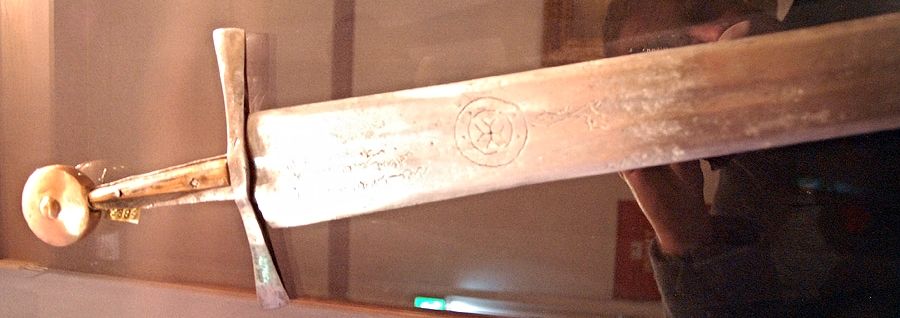
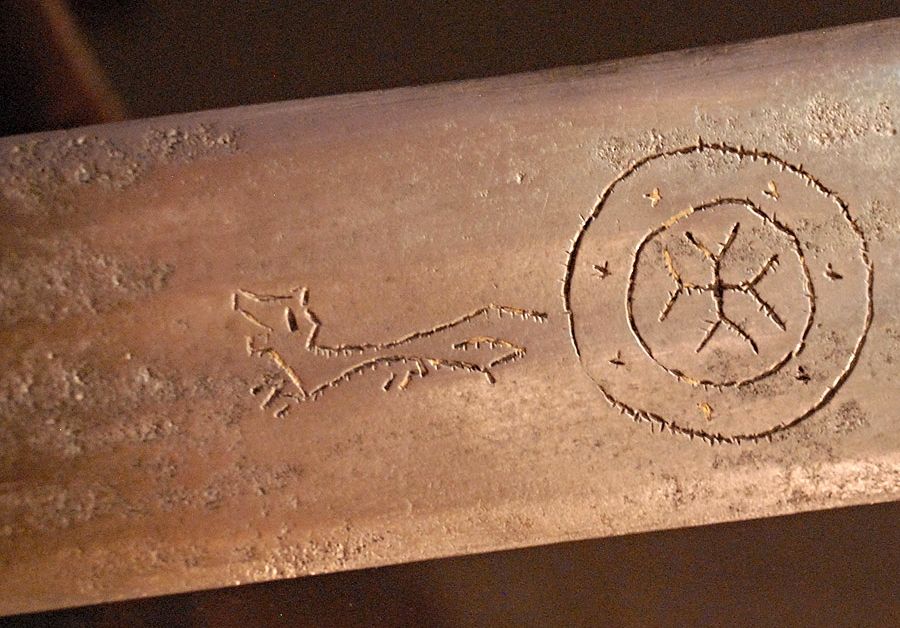
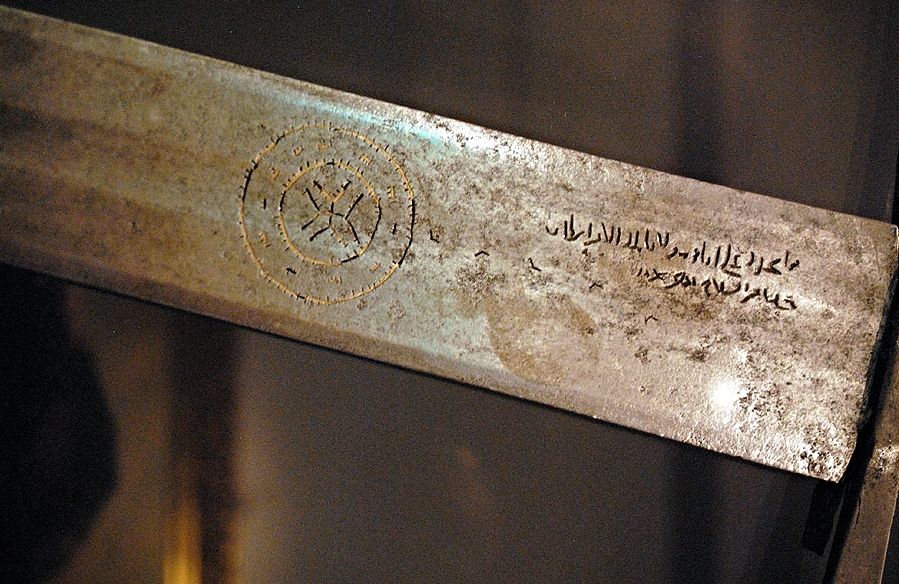
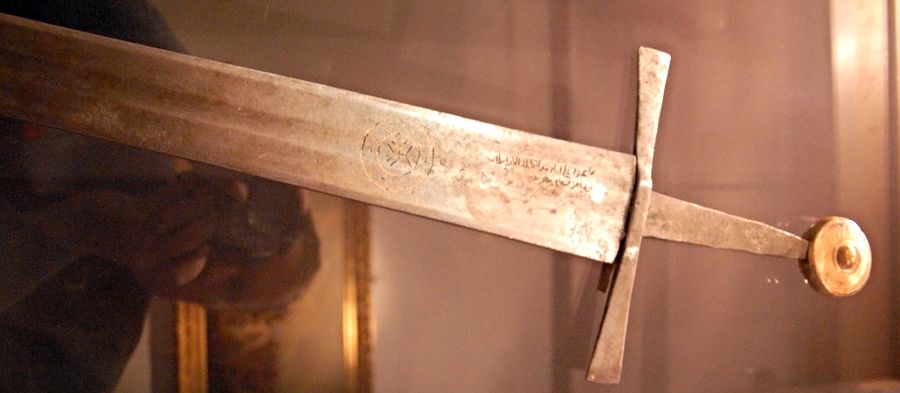
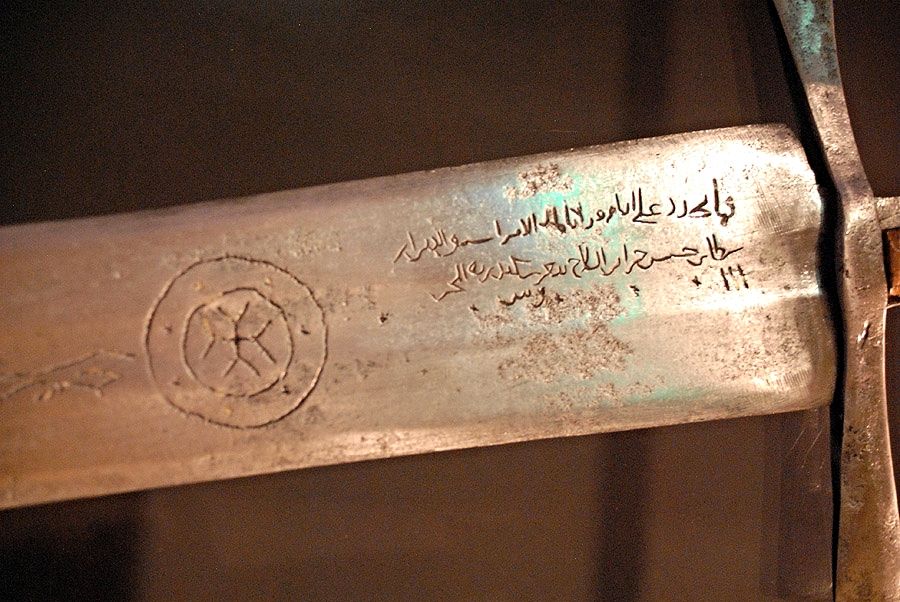
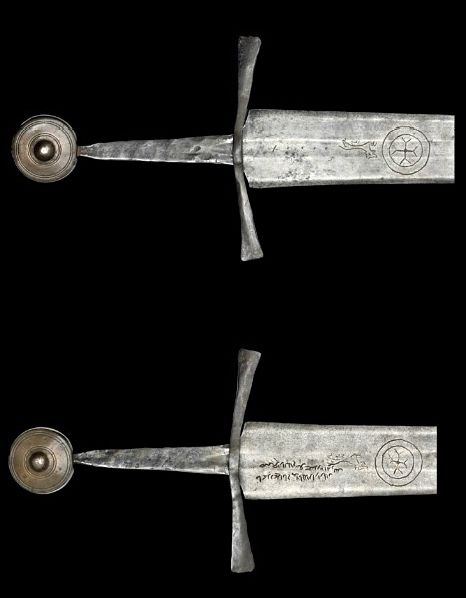
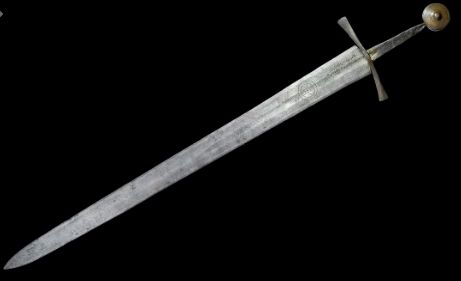
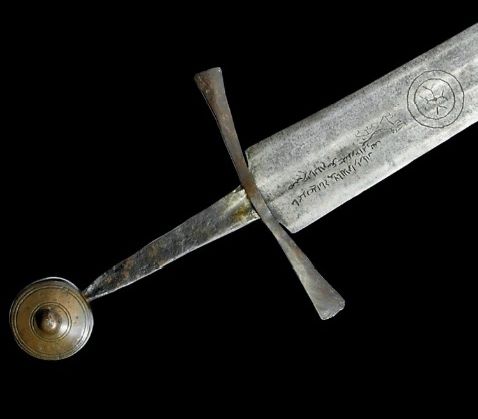
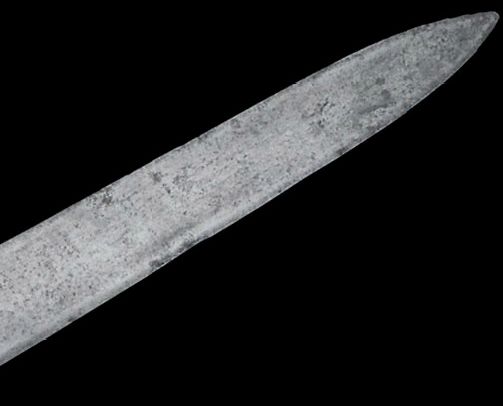
Price Realized : £385,250
A CRUSADER HAND-AND-A-HALF SWORD GERMANY OR ITALY, MID-14TH CENTURY
The double-edged blade very slightly tapering with a central gutter, triangular point, each side brass-inlaid with a running quadruped and a Maltese cross in two circles, each also with a string of five small cross motifs, one side engraved with an inscription in cursory naskh script, the crossguard loose on the hilt, with engraved cast bronze pommel, surface corrosion, minor pitting, most inlay missing
45in. (114.3cm.) overall length
Provenance:
Presumably in the Ottoman arsenal in Istanbul from shortly after 1517. Air Marshal Sir Ralph Sorley (1898-1974)
Exhibited:
The Art of the Armourer, Victoria and Albert Museum, London, 1963.
Lot Notes:
The inscription reads mimma tajaddad 'ala ayyam mawlana al-amir aristay hubs khaza'in al-silah bi-thaghr sikandariyyah al-mahrus (From what was made [or brought in] during the time of our Lord, the Amir Aristay. A bequest to the armoury of the protected frontier city of Sikandariyyah [Alexandria]).
In 1982 Ludvik Kalus published his seminal study of western swords that had been donated to the armoury in Alexandria between 1367 and 1467 AD (Ludvik Kalus, 'Donations pieuses d'épées médiévales à l'Arsenal d'Alexandrie', Revue des Etudes Islamiques, vol.l, 1982, publ.1991, pp.1-122). His study encompassed 126 examples, of which 101 are in the Military Museum in Istanbul, with a single further example in the Topkapi Palace. Although it had been exhibited in 1963 the present sword appears not to have been included in his listing. The publication of this body of material was critical to our understanding of the development and dating of Western sword types. Swords of this group were also published by David Alexander 'European Swords in the collection of Istanbul', "Waffen und Kostumkunde 27/2, pp.81-118).
The majority of these swords were made in Europe, most probably Milan. Many, as here, bear European makers' marks. The present sword is unusually well preserved, retaining part of the brass inlay that originally filled the maker's marks. A quadruped is seen here on each side of the sword; similar animals are noted by Kalus on nine different swords. To that list can also be added an example in the Khalili Collection (David Alexander, The Arts of War, London, 1992, no.32, pp.76-78). The mark of the cross with split terminals within a double circle is also found on five other swords, one of which (Kalus no.36) is one of those that also has the running quadruped.
That sword, in the Military Museum, Istanbul, has an inscription that also notes it as being a donation from the Amir Aristay, albeit with very slightly different wording to the present sword. In all seventeen swords are noted by Kalus as having been donated by this amir, to which listing can be added the Khalili sword and the present example. Saif al-Din Aristay Al-Zahiri, a former Mamluk of Malik al-Zahir Barquq, held various posts before being appointed governor of Alexandria in mid-December 1400. He only held the post for a few months, being relieved in May-June 1401. He died on 7 September 1408. Since a number of the inscripions include the phrase ala ayyam (in the time of) we know that the donations must have taken place while he was governor. We thus have an absolutely firm terminus ante quem for the manufacture of the swords.
It is tempting to link the presence of this number of crusader swords in Alexandria to the sacking of the city that took place in the final crusader assault, the short-lived attack by King Peter I, the Lusignan ruler of "Cyprus and Jerusalem" in 1365. The earliest group of swords noted by Kalus are all donated by the Amir Ukuz, in 1367, only two years after the very brief but highly destructive occupation.
The condition of all the swords in this group is very good. In contrast, those that have survived in Europe are generally in excavated condition, the blades heavily corroded. Even among the Istanbul swords however the present one is very well-preserved indeed, with no pitting at all and its retention of some of the brass inlay in the maker's mark. It is a remarkable survival from an extraordinary historical period.
See also this extract of Ewart Oakeshott's Records of the Medieval Sword regarding type XVI: sword-site.com/thread/167/oakeshott-type-records-medieval-sword
Source: www.bonhams.com
Features: (sourced: www.christies.com/features/2010-march-captured-crusader-sword-475-1.aspx )
Weapon of Choice: The Captured Crusader Sword
BY WILLIAM ROBINSON, INTERNATIONAL SPECIALIST HEAD, ISLAMIC ART
In 1362 king Peter I, the Lusignan King "of Cyprus and Jerusalem" launched what was to be the final crusade against the Muslim Mamluk empire in the Eastern Mediterranean. A rallying cry went round Europe, and in 1365 the force set sail from Cyprus on its way to Mamluk Alexandria. Despite being outnumbered, a mixture of luck and courage meant that at the end of the day the crusaders had total control of the city. King Peter wanted to use this as a bridgehead to wrest further territory away from the Mamluks, but the majority of his soldiers regarded the main purpose of the journey as an excuse for plunder. The vast majority of the force set sail back to Cyprus, their boats laden with booty. So much was taken that for years afterwards divers in the mouth of the harbour found items that had been jettisoned from the overloaded retiring boats. While the crusaders profited in the short term, the Venetians were horrified as all their trade with the Mamluks in the Mediterranean was jeopardised.
The vast majority of crusader swords that have survived in good condition have done so because they were given to the armory in Alexandria. As here, they all have the name of the relevant amir who gave them, which is the most important dating method of all that we have for mediaeval European swords. Our sword was donated by the Amir Aristay II, who was the governor of Alexandria between December 1400 and May 1401 and who died in 1408. At that time it was perfectly normal for swords to be given in a religious context. In the 12th century the citadel of Aleppo was decorated with swords and weaponry that had been captured from the Crusaders which "provided a spectacle which people admired for seven days". It continued a pre-Islamic tradition where captured swords were displayed in the Kaaba at Mecca. Shortly after 1517 the swords that had been preserved in the armory at Alexandria were taken by the then victorious Ottomans to be kept in the Topkapi Palace in Istanbul which is to this day where the greater majority of them are to be found.
About the Author
William Robinson is the International Specialist Head of Islamic Art, and Rugs & Carpets at Christie’s King Street. He is the author of numerous articles for publications such as Apollo and Hali and an internationally recognized lecturer on carpets and Turkish pottery. In 1993, Mr. Robinson was responsible for the sale of The Bronze Lion for £2.4 million, which set a world auction record at the time for Islamic art. Mr. Robinson is a graduate in Art History and Archeology from Cambridge University and a Fellow of the Royal Asiatic Society

.png?width=1920&height=1080&fit=bounds)